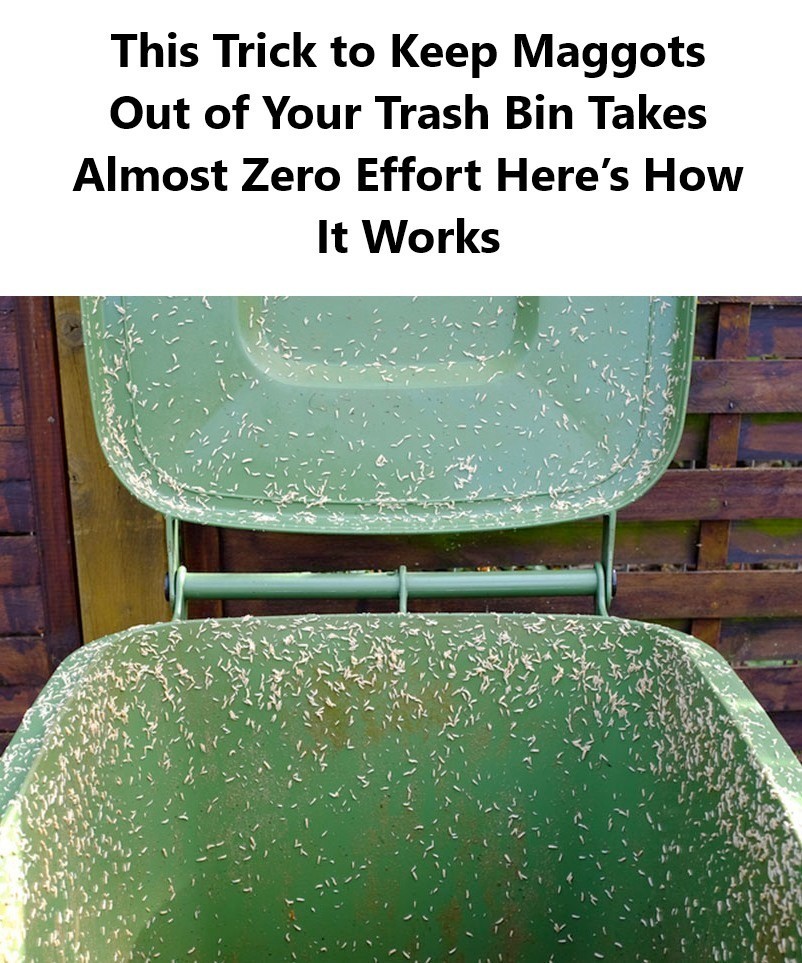ADVERTISEMENT
**Maggots in the Trash Bin? Here’s How to Prevent Them**
There’s nothing quite as unsettling as discovering maggots squirming in your trash bin. Whether it’s the middle of summer or a rainy day, maggots seem to appear out of nowhere, taking over your garbage with their wriggling presence. Not only are they unpleasant to look at, but they also pose health risks and create foul odors. Maggots are the larvae of flies, particularly the common housefly, and they thrive in moist, decomposing environments, which makes a trash bin a perfect breeding ground.
Luckily, preventing maggots from infesting your trash is easier than you might think. With a few simple practices, you can keep your trash bin clean, dry, and free from these creepy crawlies. In this article, we’ll dive deep into the causes of maggots, their lifecycle, the conditions that attract them, and most importantly, how to prevent them from taking over your trash bin.
### Understanding Maggots: The Basics
Maggots are the larvae of flies, particularly the common housefly (Musca domestica), though other types of flies can also contribute to maggot infestations. The lifecycle of a fly goes through several stages: egg, larva (maggot), pupa, and adult fly. Flies lay their eggs in decaying organic matter, such as food waste, animal carcasses, or in some cases, your trash. After hatching, the eggs become maggots, which feed on the decaying material.
In ideal conditions, maggots can appear in as little as 24 hours after flies lay their eggs. The larvae grow rapidly, feeding on the organic matter, and eventually, they form pupae before emerging as adult flies, starting the cycle all over again. This lifecycle is often accelerated in warm, moist environments, which is why trash bins are an attractive breeding ground for flies.
### What Causes Maggots in the Trash?
Understanding why maggots appear in your trash can help you develop effective strategies to prevent them. Here are the main factors that contribute to maggot infestations:
1. **Food Waste**: The most common cause of maggots in the trash is food waste. Leftover food, meat scraps, vegetable peels, and other organic matter provide a rich source of nutrients for flies and their larvae. If these food scraps are left uncovered or are in a damp environment, they become a breeding ground for flies.
2. **Warm and Moist Conditions**: Flies and maggots thrive in warm, moist conditions. During the warmer months, trash bins are more likely to be exposed to heat and humidity, creating an ideal environment for flies to lay eggs. Moisture in food waste or liquid spills can also attract flies.
3. **Improper Trash Storage**: Leaving trash bins open or not sealing them properly can create an easy entry point for flies. If trash bags are torn or not securely tied, it gives flies access to the decaying organic matter inside.
4. **Lack of Regular Waste Disposal**: When trash is left in bins for extended periods, especially in warmer weather, it decomposes and becomes a magnet for flies. If you let your trash pile up for several days before taking it out, it increases the likelihood of a maggot infestation.
### How to Prevent Maggots in Your Trash Bin
Now that you understand why maggots appear, let’s focus on how to prevent them. The key to avoiding maggots is to create an environment that is unappealing to flies and their larvae. Below are 10 effective strategies you can use to keep maggots out of your trash bin.
#### 1. **Seal Your Trash Bags Tightly**
The most important step in preventing maggots is to ensure that your trash bags are sealed tightly. If food waste or any organic material is left exposed in the bin, flies will be attracted to it. Always make sure the trash bags are securely tied or sealed so that there are no openings for flies to enter. Consider using bags with a double-layer seal for added protection.
**Tip**: For especially odorous items, like meat scraps or greasy food waste, double-bagging can help contain the smell and prevent flies from getting inside.
#### 2. **Keep Food Waste in a Separate Container**
Instead of throwing food scraps directly into the trash, consider using a compost bin or a designated food waste container. These containers are typically sealed and can be stored in a cooler or outdoor bin, preventing flies from accessing the food. If you don’t compost, you can still use a separate food waste container that you can empty into the trash every few days.
**Tip**: For added protection, keep your food waste container in the fridge or freezer until trash day. This helps keep the scraps fresh and less attractive to flies.
#### 3. **Line Your Trash Bin with Newspaper or Paper Towels**
Placing a layer of newspaper or paper towels at the bottom of your trash bin can help absorb moisture and keep the contents dry. Maggots love moist environments, so reducing moisture in your trash bin can make it less inviting to flies. If there’s a lot of liquid waste, such as from food containers or bottles, this simple trick can go a long way in preventing maggots.
**Tip**: You can also sprinkle some baking soda or diatomaceous earth (a non-toxic substance) in the bottom of the bin to further absorb moisture and control odors.
For Complete Cooking STEPS Please Head On Over To Next Page Or Open button (>) and don’t forget to SHARE with your Facebook friends
